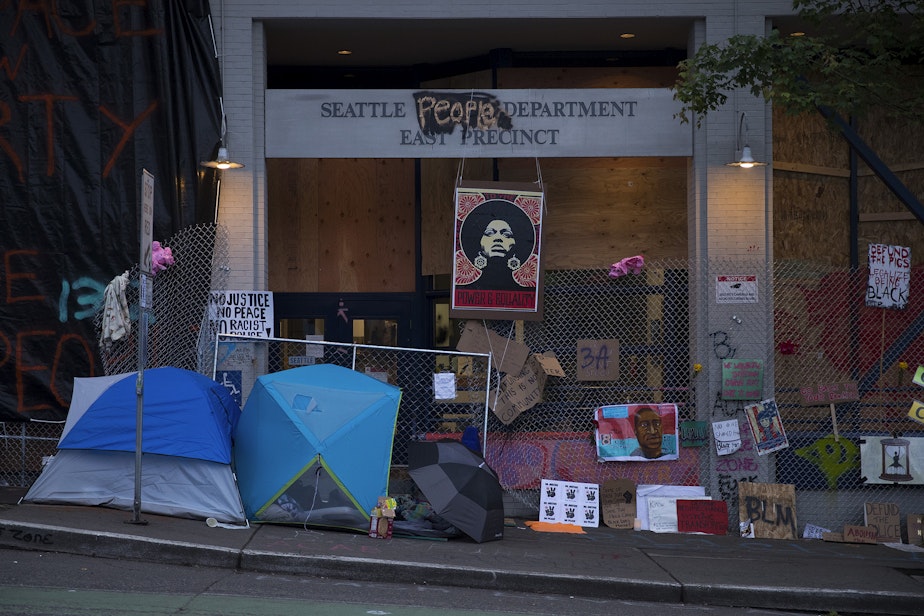Seattle Police evacuation of East Precinct broke no laws or policy, oversight agency says

On June 8, 2020, protesters outside of Seattle Police’s East Precinct saw officers and staff evacuating the building. At the time, it wasn’t clear who made the call to leave, and blame for the decision was leveled against Mayor Jenny Durkan and former police Chief Carmen Best.
The Office of Police Accountability report, released on Monday, shows that Assistant Chief Tom Mahaffey made the call to leave the precinct, as KUOW reported in an investigation in July.
The police accountability office, known by its acronym, OPA, said that Mahaffey and former Chief Best provided differing accounts, with Best saying she was kept out of the loop, and Mahaffey saying that he told her of his plan to evacuate personnel.
Additionally, the agency said that Best and Mahaffey broke no law or policy in the evacuation of the police building, which preceded the creation of the Capitol Hill Occupied Protest, six blocks occupied by protestors who dubbed the area a police-free zone.
After the evacuation, complaints to the police accountability office alleged that the chief failed to take responsibility for her command by allowing the evacuation, which led to the creation of CHOP.
The police accountability report builds on KUOW's investigation from July, providing further insight into what happened. In their interviews, Chief Best and Assistant Chief Mahaffey disagreed over whether Best authorized the plan to evacuate the East Precinct.
Sponsored
Related: We know who made the call to leave Seattle Police’s East Precinct last summer, finally
Chief Best said she would have “preferred to have been a part of the decision-making process before” they decided to exit, but that she wasn’t. She said she was notified of the decision after the collaborative decision was made.
Best told the police accountability office that she believes the decision to evacuate the East Precinct was not insubordination, however.
In Mahaffey’s first interview with the police accountability office, he said former chief Best was aware of police case files and other sensitive items being removed from the precinct, but that he never discussed the evacuation of personnel with Best.
In his second interview, Mahaffey offered a different version, and said that he told Best by phone “exactly what we were going to do,” and that he would never make that kind of decision without running it by his boss.
Sponsored
The police accountability office obtained phone records showing multiple calls between Mahaffey and Best on the day police personnel left the East Precinct. This indicates the two communicated during that critical time, but not of what was said.
For weeks, protesters and police faced-off outside the East Precinct on Capitol Hill. A police barricade — which prevented people from marching past the precinct — became a flash point for nightly clashes between police, shooting off blast balls and releasing noxious gas, and protestors determined to march.
Police leaders said they worried someone would set fire to the building; FBI intelligence provided to Seattle Police suggested that government buildings would be targeted by protesters.
Mayor Durkan’s office directed the chief to remove the barricades, and allow protestors to march past. According to the police accountability office, the chief then delegated “the specifics of maintaining continuous police operations within the confines of the East Precinct to her assistant chief.”
After consulting with other commanders, Mahaffey ordered police personnel to leave the precinct.
Sponsored
The police accountability office said they found this decision to be reasonable, based on the information available at that time and the assistant chief’s need to “protect both the East Precinct and the physical safety of protesters and SPD officers under his command.”
“To find otherwise would be to engage in hindsight analysis divorced from the immense pressures and time constraints that the Assistant Chief faced at the time,” said Andrew Myerberg, director of the Office of Police Accountability.
“No one can definitively say that any alternative strategy—even if one were feasible—would have produced better results.”




